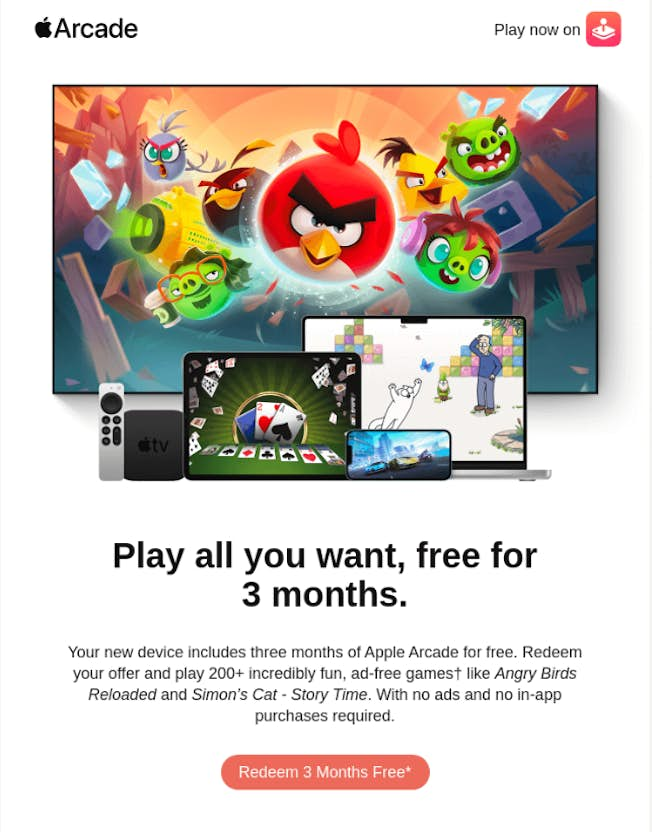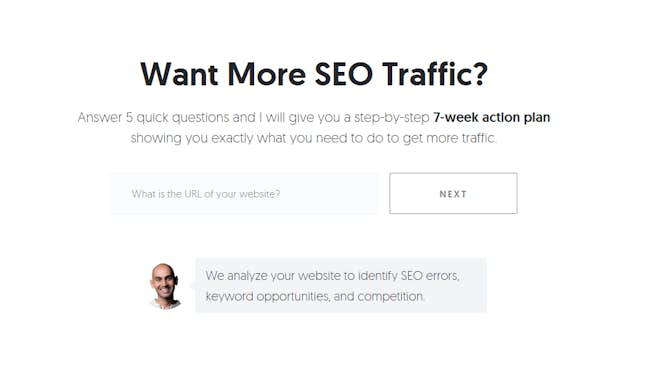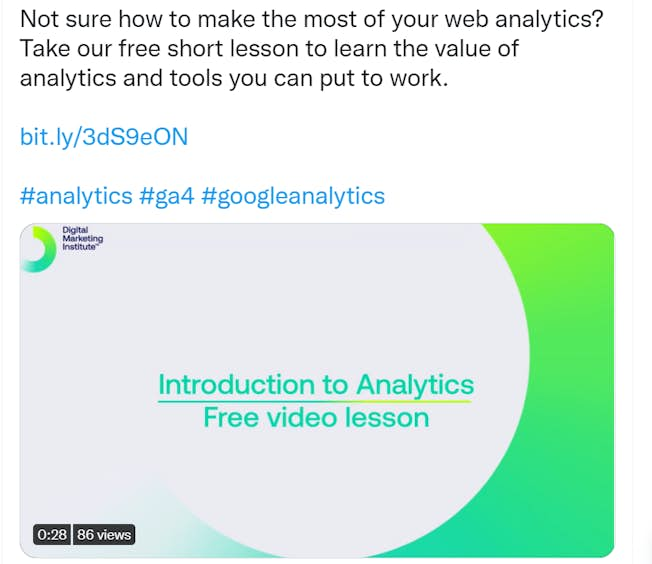Oct 30, 2022
How to Build & Grow Your Email Marketing List
Building up a healthy email list is a successful way to warm up your prospective customers so they are ready to buy.
The health of your email list feeds into the success of your business. Particularly with first-party data becoming so important to companies and marketers. The demise of third-party cookies in 2024 makes your email list a key channel for engaging with prospects and customers.
In fact, the ‘2021 State of Email Report’ found that 37 percent of brands are increasing their email budget, and just 1.3 percent are making cuts. That just shows the importance and power of email marketing.
In this blog, we reveal how to build a quality email marketing list and offer 5 top tips on how to segment and target your list effectively with examples.
The Big Benefits of Email Marketing
On average, email drives an ROI of $36 for every dollar spent, higher than any other digital marketing channel, according to Litmus.
And it’s not only ROI that’s impressive, email also offers businesses of all sizes the opportunity to connect with customers in a real way - after all, people have opted in to receive communications from your brand.
With 99 percent of email users checking their inbox every day and some of them checking 20 times a day, according to Optinmonster, it’s a medium that people are comfortable engaging with.
Not only can you contact people with new offers and promotions and drive traffic to your site but you can also retarget them based on the content they have interacted with. This means you can create personalized content that is more likely to drive conversions by segmenting your email audience.
Email is also cost-effective. Sure, there can be set-up and database management costs (dependent on the size of your business) to consider, but once you have chosen a provider, you can start immediately.
The ultimate multi-tasker, email marketing is the value provider, the relationship builder, the sales closer, the news sharer, the brand ambassador, and the deal revealer. So, let’s look at how to get started.
Tip: Read ‘The Ultimate Email Marketing Guide for Beginners’ (and download a free calendar template) if you want to learn the fundamentals.
How to Choose an Email Provider
To get started you need an email provider to help you build your lists and track your campaigns.
There are plenty of email database marketing tools out there that can make it easier to plan and execute email campaigns. In fact, there are so many it can be difficult to choose the right one for your business.
Here are a few things to consider in your selection:
- Simplicity of use
- Cost
- Integrated CRM
- Advanced content capabilities e.g. landing page creation
- A/B testing capabilities
- Mobile optimization
- Analytics
- Social media integration
- Online or in-person training
- Customer support.
Here’s a list of some of the top email marketing automation tools out there to give you some guidance.
How Do You Build a Quality Email List?
There are several ways to build an email marketing list. However, to build a list of quality customers and prospects you will need to master the art of intent.
What this means is that it’s best to try and capture the details of users who are genuinely interested in your brand, product/service, or content. You could have a huge database but there’s no point in having it if half of them are not interested in your business.
Segment & Target your List
Not all your customers are the same and they should not get the same messages. Segmentation in your emails is important to add context for your different customer types and ensure your customers receive a message that is relevant to them at a point that makes sense to their purchase journey.
You can then create tailored and personalized messages that answer your customers’ specific problems while addressing their wants, needs and desires.
“78% and 72% of marketers said subscriber segmentation and message personalization were the most effective email marketing campaign strategies” HubSpot’s Blog Research 2022
The two most effective ways to segment your prospect list are by ‘who they are’ and ‘what they’ve done.’
- The ‘who they are’ refers to demographics like age, gender, income and location.
- The ‘what they’ve done’ refers to the actions they’ve taken on your website.
For example, one prospect could have downloaded a brochure, while another might have opted in to a specific offer. Any decent email marketing provider will allow you to segment your list with ease and automate your campaigns to send to your different customer types at a time of your choosing.
Let’s look at some simple but effective tactics to grow your list with contacts that count.
1) Give away freebies your customers want & need
You can’t expect your prospects to give you their confidential details without offering something of true value. It’s one of the best ways to generate new email subscribers and propel your lead generation numbers.
But here’s the thing: you can’t just offer any old freebie, it needs to matter to your target audience. To identify the most desirable freebie for your target audience you need to create and consult your target personas - here’s a buyer persona template if you need help creating yours.
Once you know the needs, pain points and preferences of your customer base, you can choose the giveaway that best solves your audience’s core problems.
Here’s a great example from Apple Arcade offering 3 free months of gaming to their customers who have a new device.

Free content options you could consider include whitepapers, industry reports, online webinars, and presentations. Your offer should depend on what appeals to your target audience’s desires.
2) Create an online competition
Another clever way to entice prospects to give you their email details is to create and run an online competition that appeals to your audience’s competitive nature.
A great place to create and run your contests is on one or more of your most popular social media channels. Examples of programs you can use to create social media competitions include Wazoku, ShortStack, and Rafflecopter.
Whichever one you choose, create a competition that requires entrants to submit their email details to win.
3) Use plugins to capture leads
There are tools out there that can create pop-ups on your website for lead generation at that crucial point when your visitors are about to leave.
This clever software - Optinmonster is an example - follows your user’s mouse and pops up when they are about to click the exit button – perfect for capturing a last-minute email address.
Why not create a form that offers a freebie (like access to a gated whitepaper) or gives details on why the user should subscribe to your newsletter? You can personalize the pop-up so it matches the content of what a visitor is reading.
Say a user is reading a blog about email marketing tips for 2023, then create a pop-up that offers a free email campaign calendar in exchange for an email address.
This example from Neil Patel appears on his blog when a visitor tries to exit. It offers a 7-week action plan to get more website traffic.

The beauty of this type of software is that it includes analytics to track and analyze the clicks and views your form gets, along with conversion rates. You can also A/B test imagery and content to see which resonates with your audience.
4) Use opt-in forms
If you don’t have the budget for lead capture software, you can create opt-in forms.
For example, to capture the attention of your most engaged readers, set your newsletter sign-up form to pop up when your reader gets halfway through a blog post.
When creating the pop-up think about design and placement. Keep your opt-in form subtle, small, and light on content. And ensure it’s easy to exit from on desktop and mobile devices.
You will also need to carefully consider where to place your opt-in box. Your blog is a good place to start. Only place it in contextually relevant places on your website – the places your customers would expect to see it and welcome the reminder.
5) Place CTAs in relevant spots
Sometimes your readers need a gentle nudge and reminder about your awesome newsletter, upcoming webinar, or whitepaper giveaway to take the action you desire.
But make sure the content is relevant. For example, include a CTA to subscribe to your newsletter at the end of a blog post or in your bio for your guest posts on external sites.
You can also use social media effectively. Include CTAs of high value that drives people to interesting or free content. This example from the DMI’s own Twitter feed urges people to enroll in a free course to get access to the web analytics lesson.

Instead of asking customers to sign up to your newsletter on social media, you could always create CTAs that offer access to gated content or unique offers. And don’t forget the importance of context – avoid annoying fans and website visitors, only add your CTAs in the places that make sense (and are relevant) to their user journey.
Do you share other brands’ content through your own social media channels? If so, use a tool like Sniply to create a ‘snip’ or banner that appears at the bottom of the web page you’re sharing.
Whatever method you choose it’s essential to communicate the value you are providing to customers and prospects.
Use email to drive leads and convert prospects
Email offers a cost-effective way to engage prospects and customers with personalized content. DMI’s short email marketing course covers everything you need to drive successful email campaigns. It explores data strategy, content creation and email design along with testing, automation and optimization. Enroll today to boost your email marketing.
Related
- Categories:
- Articles
- Email Marketing
- Customer Experience (CX)
Upgrade to Power Membership to continue
your access to thousands of articles, toolkits, podcasts, lessons and much much more.
Become a Power Member- Login
- View Courses
- - - -
- Courses
- Resources
- - - -
- My Account
- Change Password
- Logout




